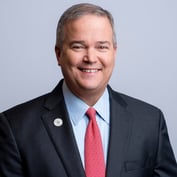What You Need to Know
- The defining challenge of a niche practice is saying no to less-than-ideal clients.
- An inquiry from a near-fit prospect can signal an opportunity to expand to a parallel niche — or a trap.
- When adding a new focus area, you must be able to continue providing the same level of service you do now.
If you’ve built a niche practice or are working on one, you know that there are a few things you need to consider to be successful. Build specific services for the specific clients you want. Develop ways to communicate that value to your ideal audience. And equip your clients and other centers of influence to echo your value so they refer you to other like-minded and similarly situated people.
But what really defines a niche practice and will regularly present challenges to advisors is saying no to people who are not your ideal client, even if they represent substantial potential revenue.
Sometimes an inbound inquiry from a near-fit but lucrative potential client flags a transition point for your business — an opportunity to expand to a parallel niche. Other times, it represents a very real trap. When you expand into adjacent niches before really owning the initial niche you planned to develop, you dilute your value proposition and push yourself back toward the generalist practice.
A Couple of Examples
Andrew Sigerson founded and runs Legacy Design Strategies, the largest boutique estate planning law firm in the country. They do estate planning only. Estate planning is a tough business because the revenue stream is irregularly recurring. A client may come in for initial planning work, and then the firm may not see them for five to 10 years until they’ve had significant changes in their lives or until an attorney is working with their heirs to settle the estate. Needless to say, it’s tempting when a high-value, recurring-revenue client comes in.
I asked him what he does when a near-fit prospective client comes in unsolicited, either by a referral or by a personal connection through one of the many community organizations he’s involved with. His answer was simple: “We do very limited business work. Buy-sells, asset protection, or transitioning the business to the next generation, but no employment law, litigation, ERISA, ADA or contracts. If they need that sort of work rather than estate planning work, we refer it out.”
Andrew hit on a key point. To be excellent, you must actively choose to be excellent. That means limiting your role to where you can be the clear best choice. Andrew’s firm’s position is that they can deliver a higher level of service because they are focused on what they do. They’re not distracted or spread too thin by trying to be all things to all people. That messaging, coupled with how they deliver their services, has helped him create a highly valuable and lucrative business that grows organically.
Will Andrew choose to take the business in another direction in the future? Maybe, but if or when he does, it will be a conscious decision to do so. My bet is that it will be another niche that parallels the work his firm already does, which means he will still have to tell potentially lucrative clients that his firm is not a fit for what they need.









 July 06, 2021 at 03:16 PM
July 06, 2021 at 03:16 PM











